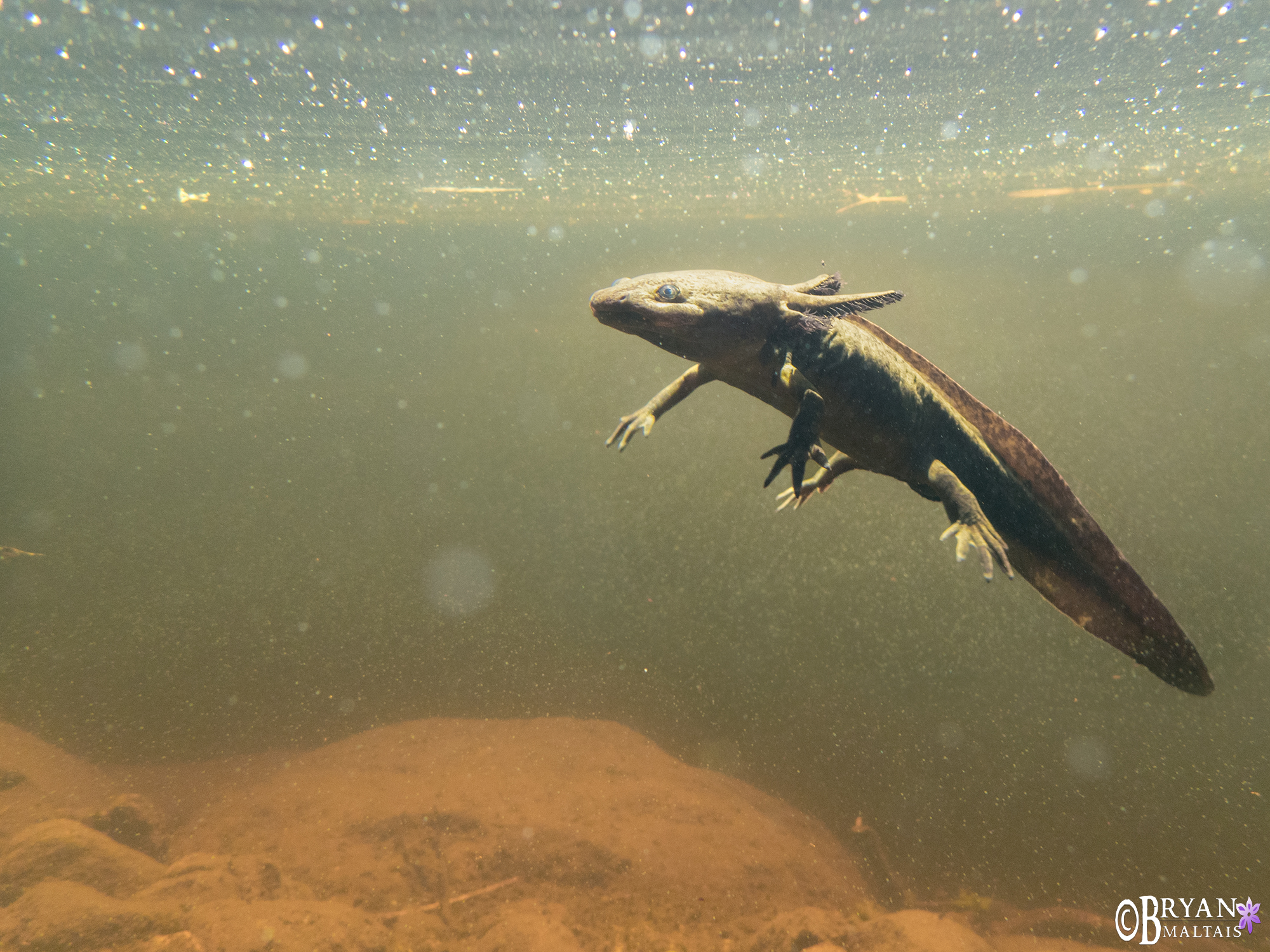
Salamanders and Paddle Boards
Imagine heading out on a beautiful Rocky Mountain lake in your kayak and a bathing suit. You look in the water and suddenly discover that it’s filled with alien-like creatures that you’ve never seen before. They vaguely resemble Trout with four legs and bushy tentacles protruding out of their necks.
I recently got a message from a woman who stumbled upon an alpine lake containing thousands of paedomorphic (also called neotenic) Barred Tiger Salamanders. She found my documentary “Metamorphosis: Tale of a Wetland” on the subject while searching for answers about this bizarre spectacle.
Salamander lakes are becoming rare. Though I wanted to see it for myself, I didn’t plan on being in the area any time soon. My chance came when terrible Labor Day weekend traffic forced me to head into a more remote region of Colorado. My new route serendipitously took me by this lake. I even had my underwater camera with me. Nothing fancy, just a waterproof point & shoot on a long selfie stick that I bring whenever there might be a chance to photograph trout underwater.
When I arrived, a guy was returning to shore on is SUP. He was excited to share that the lake was full of “Waterdogs”. I explained they’re paedomorphic Tiger Salamanders and I came here specifically to try to photograph them. He then readily offered the use of his paddle board to get a better look. What luck!
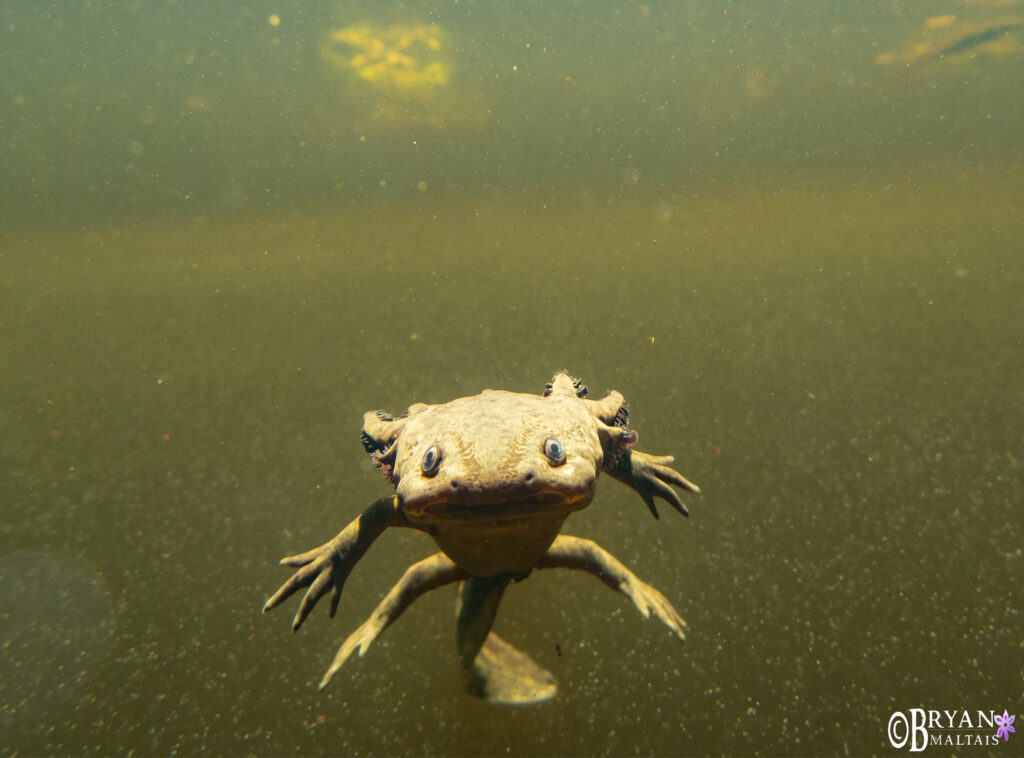
Most salamanders fled when I moved my camera too close. Amazingly, this one followed my camera by continuously swimming up to the lens.
This blog contains Amazon affiliate links. You can support this blog by using these links to shop on Amazon as you normally would.
Why do Paedomorphic Salamanders fill Lakes?
What is a paedomorphic Tiger Salamander anyway? Tiger Salamanders were created with the latent ability to assume two vastly different forms depending on environmental factors. They can be metamorphic, meaning they’re born in the water and then metamorphose into a land-dwelling version. Or they can be paedomorphic, meaning they remain in the water and become sexually mature adults that stay in their larval form.
They can breed in permanent or ephemeral (temporary) wetlands, whichever is available. In Colorado, Barred Tiger Salamanders exist in the arid plains below 4,000 ft. and up to 10,000 ft. in the mountains. In the plains, sometimes the only water available are ephemeral wetlands or cattle holes that dry up by summer’s end. At high elevations they often have the luxury of permanent lakes that were formed by glacial gouging.
At ephemeral wetlands, land-dwelling adults go there to lay eggs in spring. The larvae must fully develop and metamorphose by summer’s end when the wetland begins to dry up. Temporary wetlands have the advantage of not having fish. Tiger Salamanders can’t survive with fish because fish rapidly devour their eggs and larvae.
In the event that Salamanders have access to permanent water devoid of fish, they can become paedomorphic and never leave the water. Why would they “choose” peadamorphism and not metamorphosis? One theory says that it’s simply because life underwater is easier, therefore peadamorphism is the preferred, default state. In water, insect prey is abundant, sexual mates are all around, and temperature is stable. Migrating across land to find these things would be dangerous and exhausting.
Why do some Salamanders leave Water and others stay?
I’ve observed permanent wetlands at low and high elevations where both peadamorphic and metamorphic salamanders were present.
While water is a richer environment, it may actually trap salamanders, in a sense. In the cold waters of alpine lakes, growth may be too slow for salamanders to reach the minimum critical size for metamorphosis. Limited evidence suggests that they may become paedomorphic if they haven’t attained this size after about 3 seasons. In this case, a minority of robust individuals may metamorphose while the rest stay paedomorphic. This wouldn’t necessarily explain why both morphs would be present at warmer, low elevation wetlands.
There’s another theory that suggests an additional mechanism that might be at play that’s triggered by cannibalism. Populations of paedomorphic salamanders in lakes can become very dense, with small and large individuals sharing the same space. In such environments, cannibalism is well-documented and common. Smaller and less competitive individuals that are likely to be eaten may metamorphose to escape the water.
Metamorphosis is caused by the release of Thyroid Hormone within the salamander’s body. In a lab, paedomorphic salamanders can be forced to metamorphose by exposing them to Thyroid Hormone.
Tigers in Decline
Tiger Salamanders are officially classified as Vulnerable/Threatened in Colorado, primarily because of habitat loss. While probably once common in alpine lakes like this one, the incessant stocking of non-native Trout has left scant few lakes suitable for their survival. Meanwhile, terrestrial populations at low elevations are declining due to habitat destruction. In some cases, populations have gone locally extinct in areas near high human influx because too many individuals have been run over. This is what happened within city limits of Fort Collins, and probably other Front Range cities.
Unfortunately, I witnessed people netting salamanders out of the lake for bait. It was frustrating knowing that they were destined to have a hook torn through their body just for somebody’s momentary pleasure of catching a trout. When I explained the Salamanders’ threatened status to the bait catchers, they reasoned that they couldn’t possibly be threatened with so many thousands in this lake. Since diplomacy failed, I hovered uncomfortably close on the paddleboard until I drove them off the lake, albeit already with a few salamanders in their bucket. This is why I won’t share such locations with anybody. If you’re a legitimate researcher, prepare to meet me in person with 3 forms of ID.
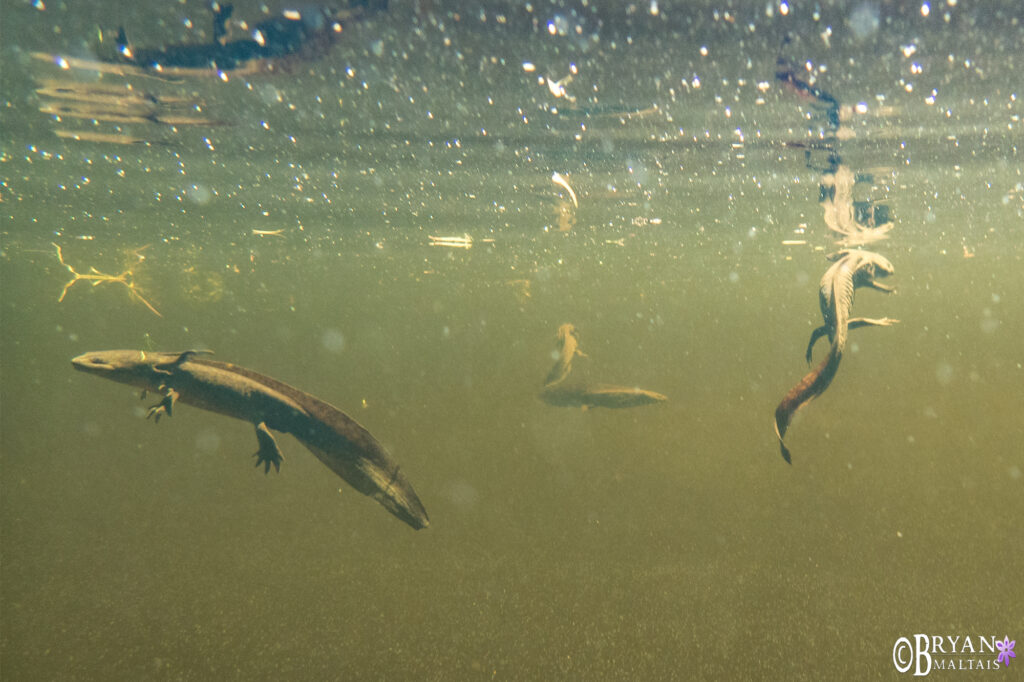
Tiger Salamanders were present in great numbers. I floated past one after another, and sometimes clusters of them.
Little Submarines
Salamanders were easy to observe as they floated lazily in the water column, occasionally beating their tail to reposition. As my paddle board slowly drifted over them, some rapidly dove while others remained unfazed. In their neotenic form, they have both internal lungs and external gills. The gills are composed of 3 fingers lined with bushy filaments that absorb oxygen. Interestingly, the lungs aren’t used for breathing, but for buoyancy like the ballast tanks of a submarine. Gulping air from the water’s surface or burping it out lets them adjust the depth at which they float.
To feed, they don’t chomp down on prey, but rapidly open their cavernous mouth to vacuum it up. This is also how most fish feed.
Huge blooms of Daphnia clouded parts of the lake. Also called “water fleas” Daphnia are tiny, round crustaceans that look like specks of dirt in the water. By the millions, they look like clouds of churned up mud. Daphnia likely provide a vital food source for hatchling Tigers, whereas adults can’t be bothered with such crumbs.
Mistaken Identity
There are two subspecies of the Western Tiger Salamander native to Colorado; the Barred Tiger Salamander (Ambystoma mavortium mavortium) and a remnant population of the Arizona Tiger Salamander (Ambystoma mavortium nebulosum). This population is probably the Barred Tiger Salamander, but there’s a chance these could be Arizona Tigers because that population isn’t far away. In their larval form, I can’t tell the two species apart and it likely requires DNA testing. People often think that peadamorphic Tiger Salamanders are one and the same as the Axolotl. While they’re darned similar and closely related, the Axolotl is a separate species, the Mexican Tiger Salamander.
Capturing these underwater photos was challenging because I couldn’t actually see what I was shooting. My camera was on the end of a long selfie stick to get closer to the Salamanders. I set the camera on time-lapse mode to shoot continuously as I maneuvered it in place and hoped for the best.
I obtained much of the information for this post from this invaluable article: Larval growth in polyphenic salamanders: Making the best of a bad lot by Whiteman, Wissinger, Denoël, Mecklin, Gerlanc and Gutrich.
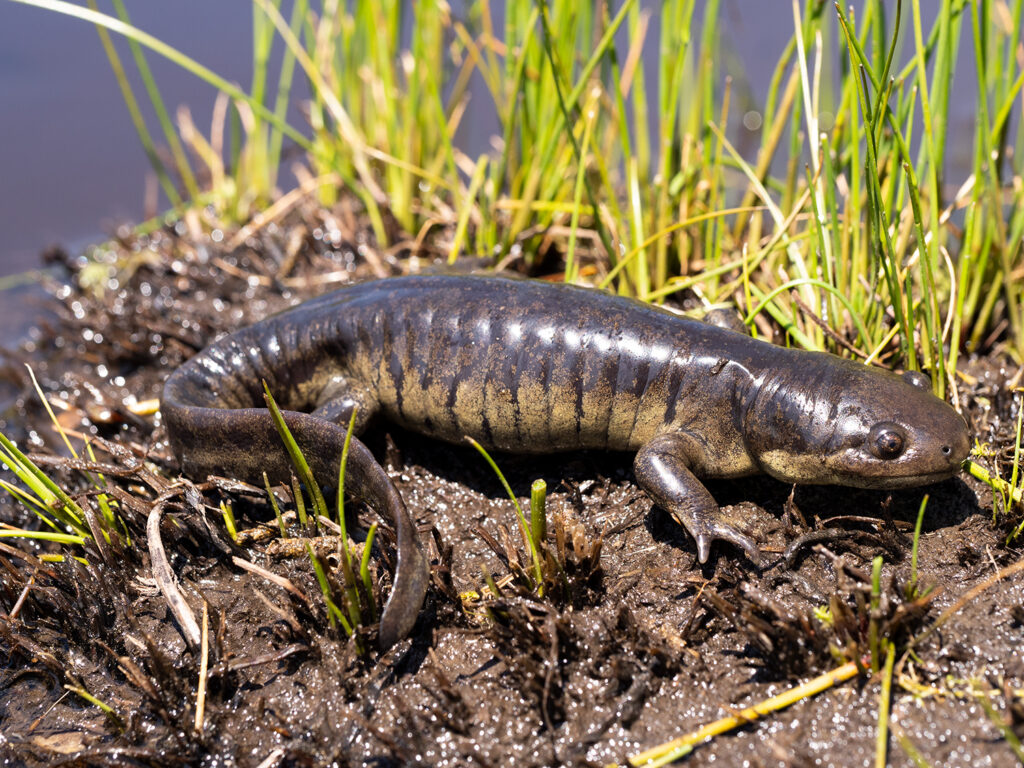
The Arizona Tiger Salamander is more mottled, lacking the yellow and brown stripes of the Barred Tiger Salamander.

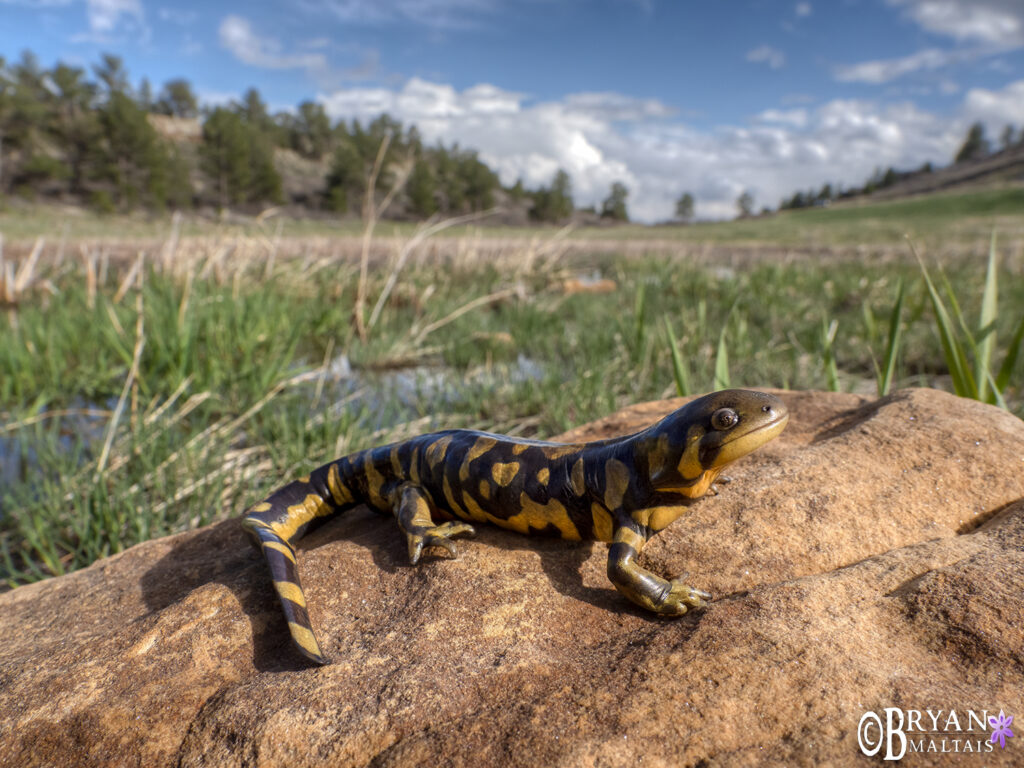
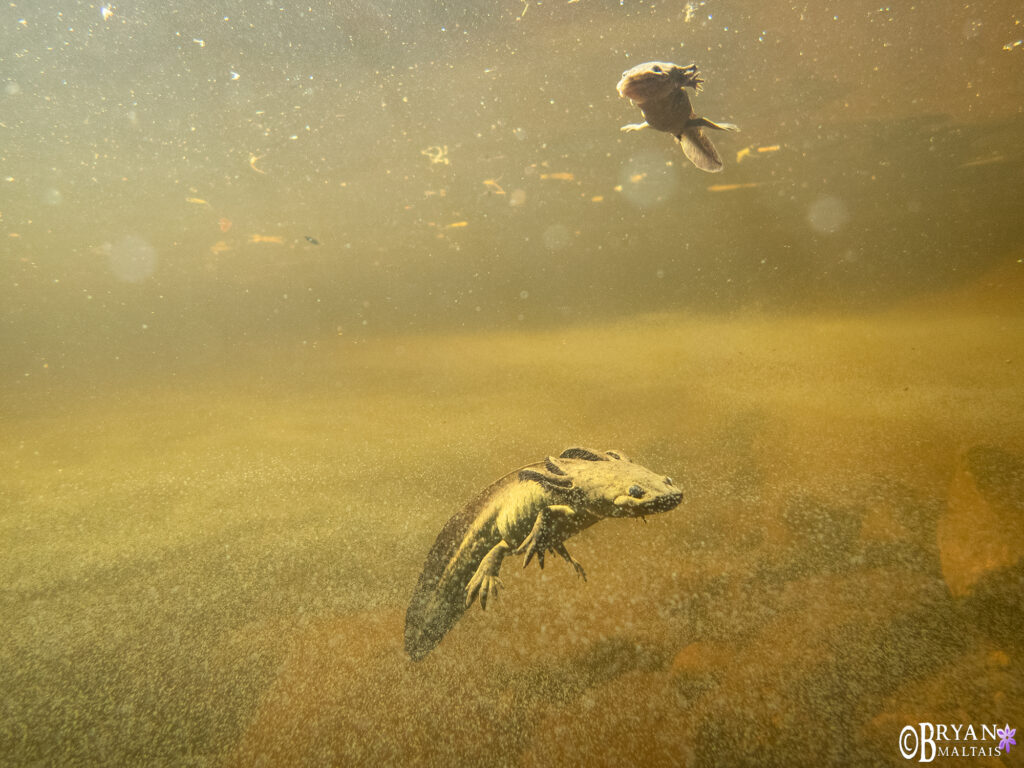
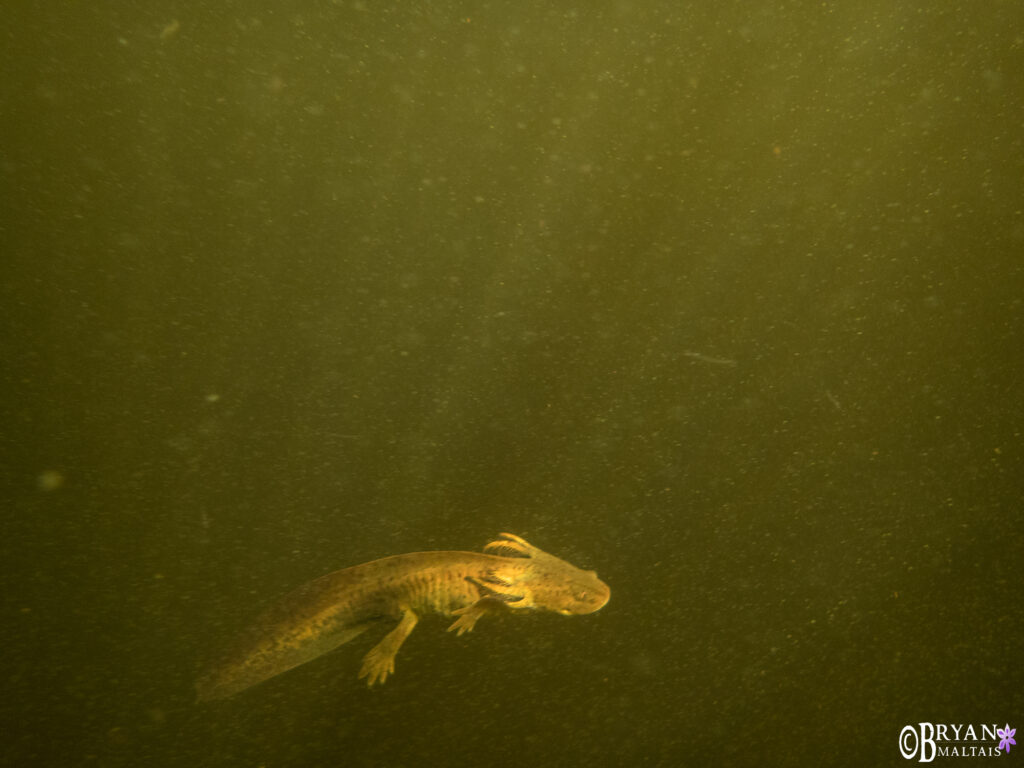
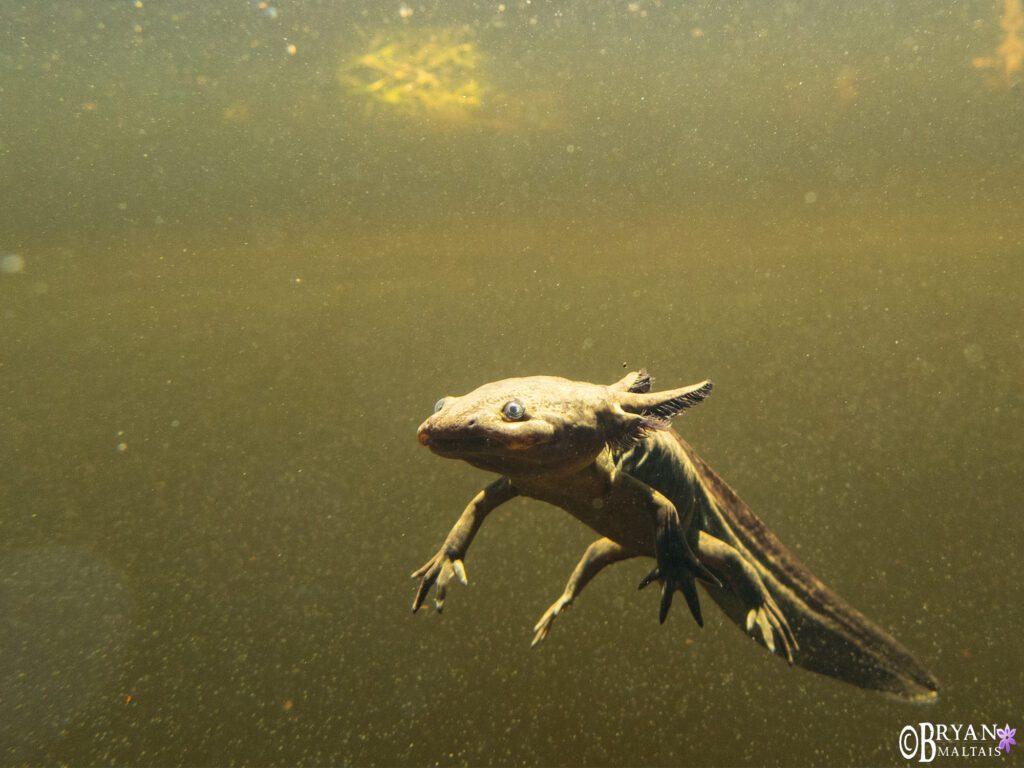
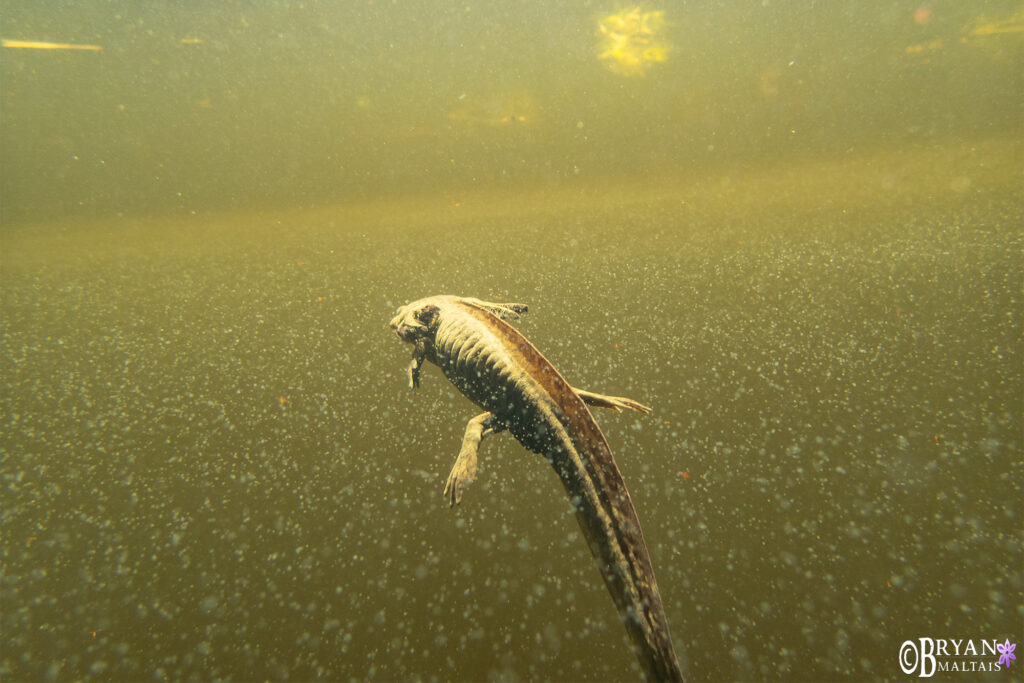
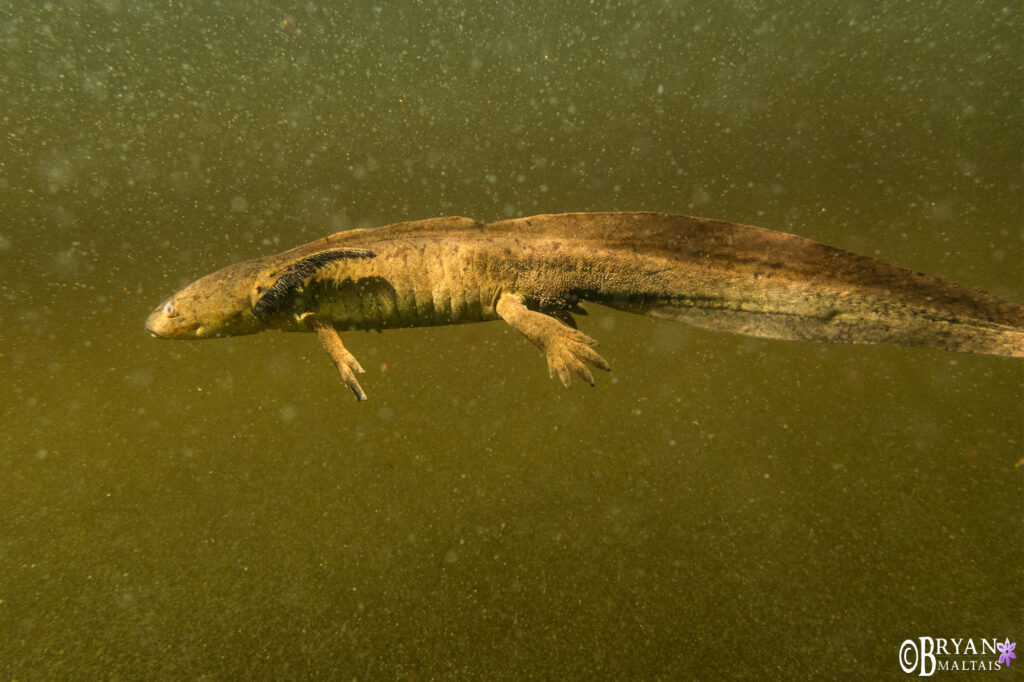

I had 150 in my window wells this morning. Not kidding. I relocated them to the pond I live next to.
Bear Lake in Rocky Mountain National Park was filled with these salamanders this past summer. We thought a great find! Would they be considered axolotls?
Interesting! I haven’t seen them there before. The Axolotl is a different species; the Mexican Tiger Salamander.